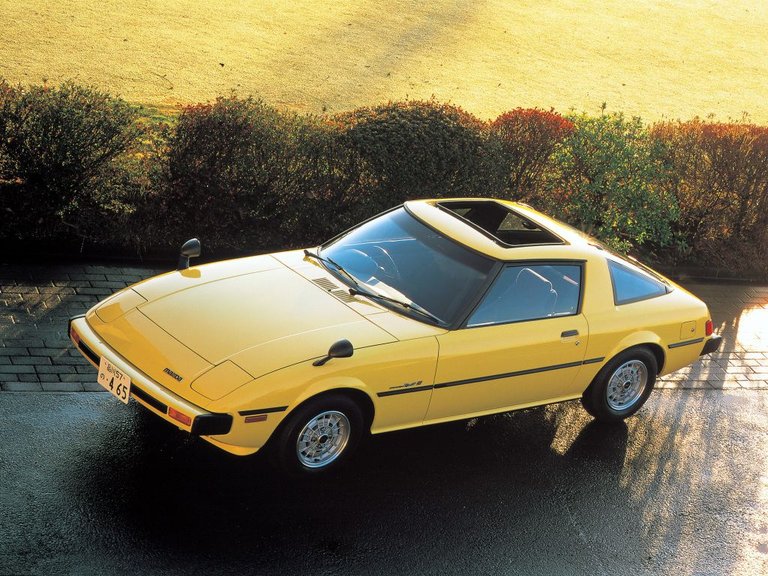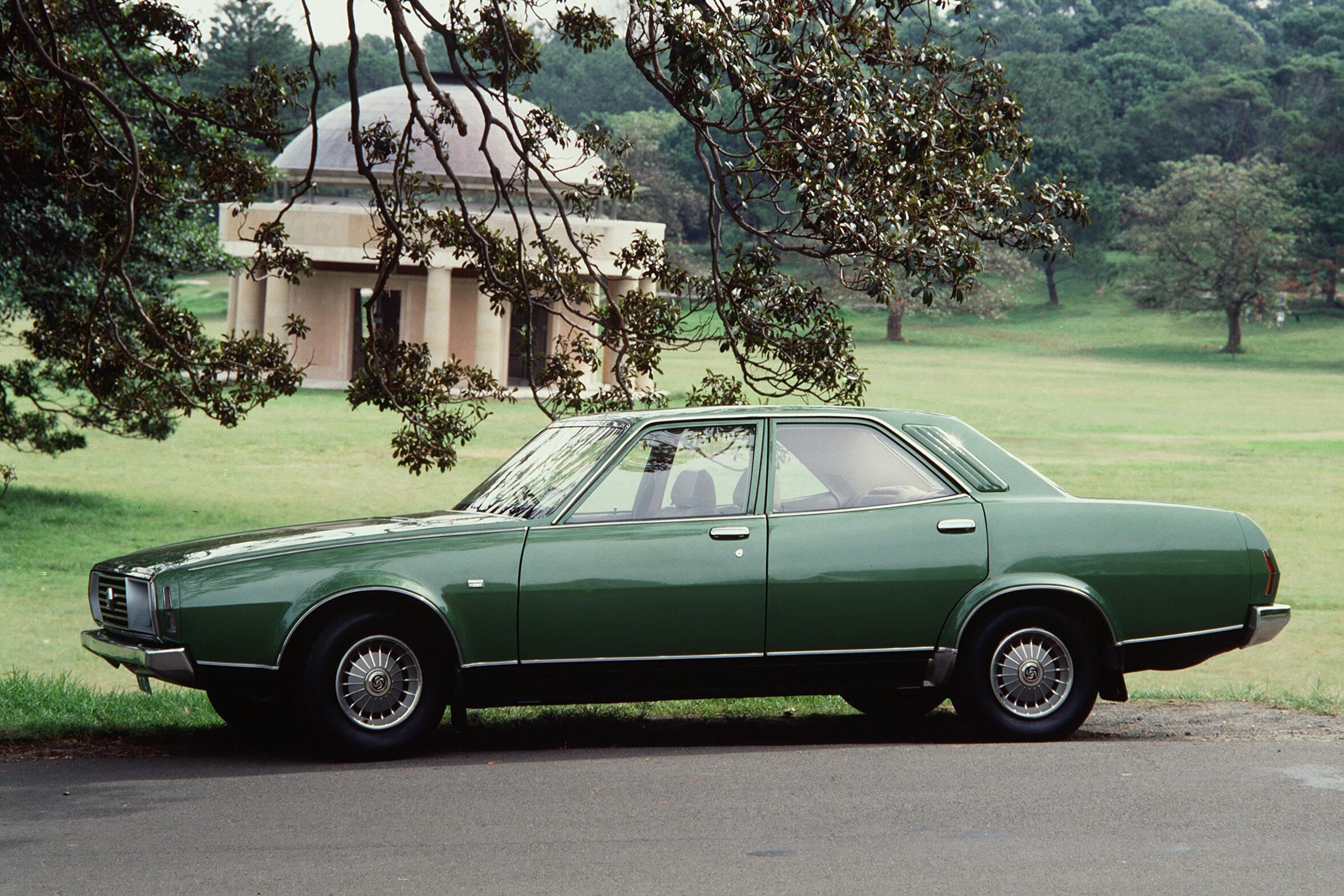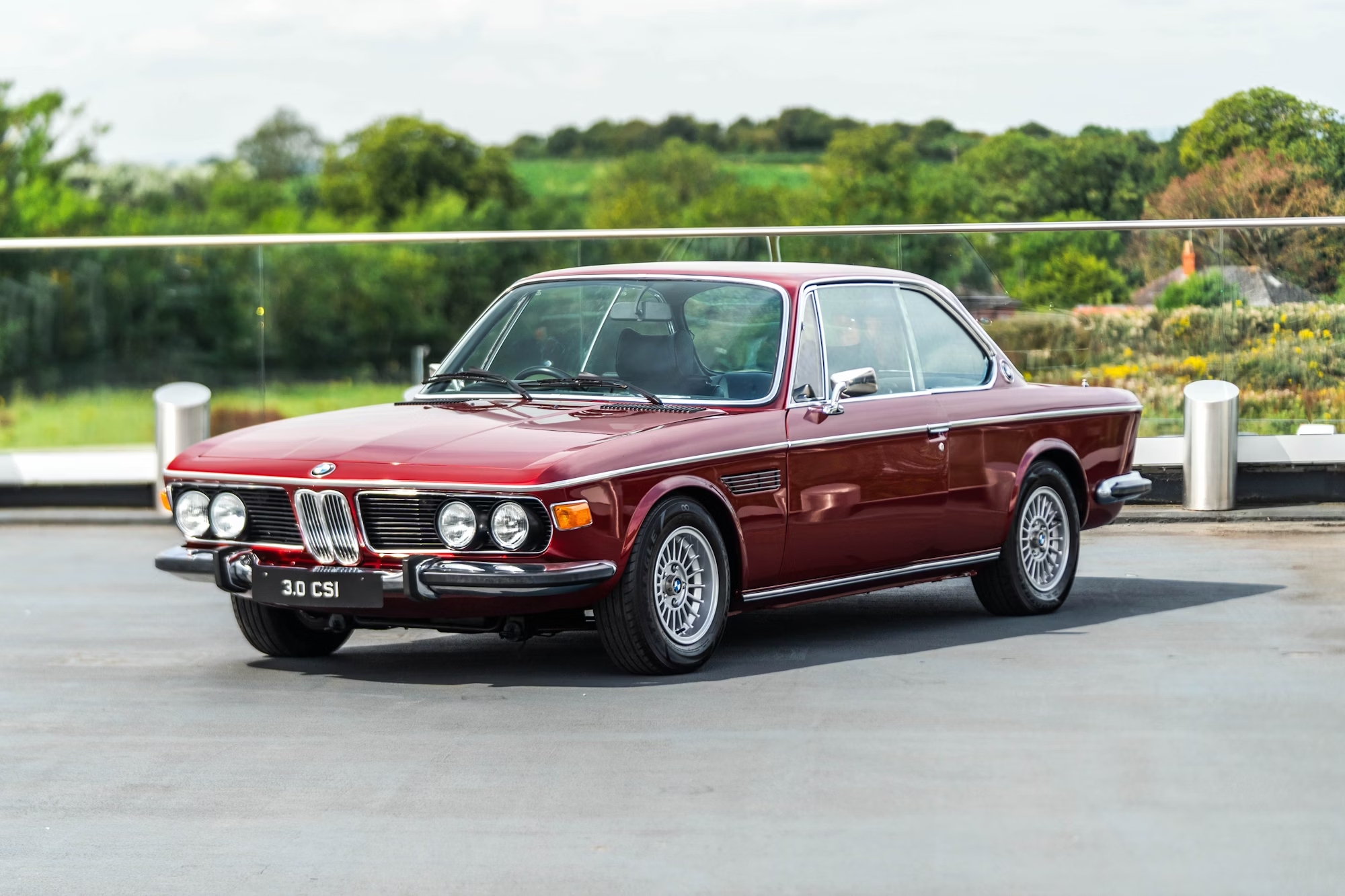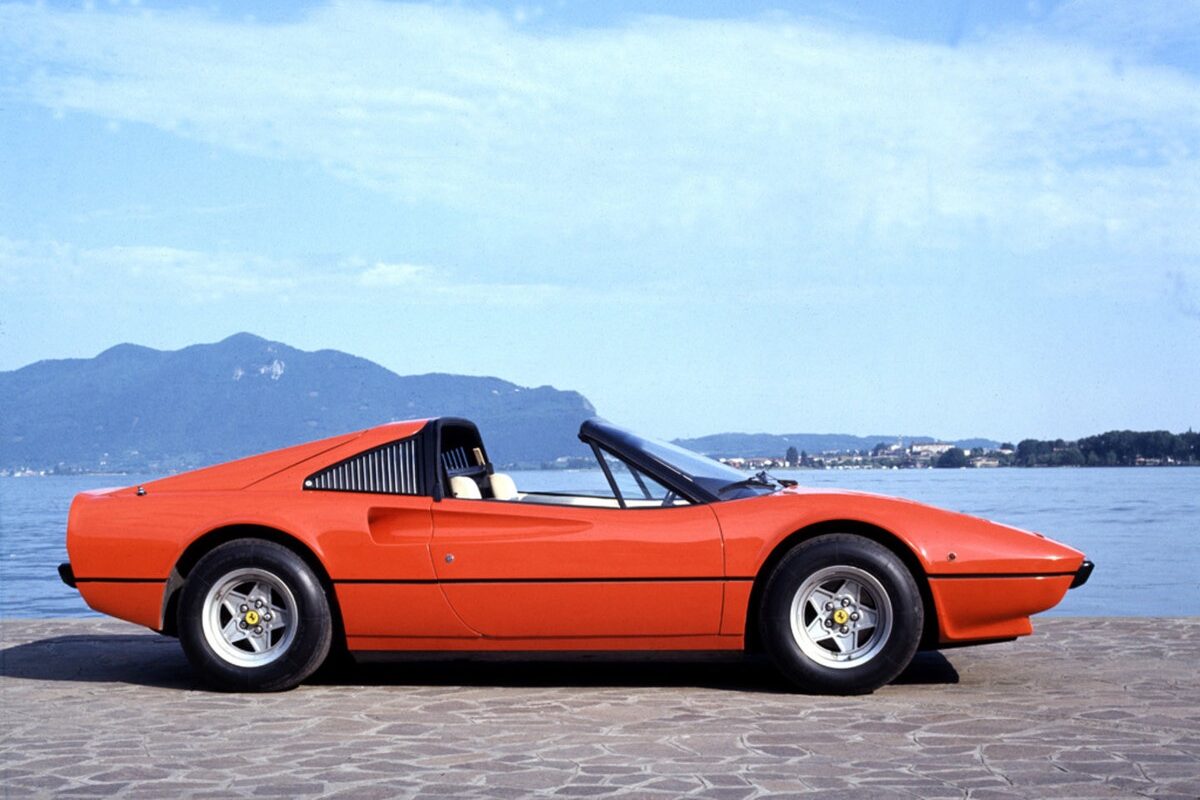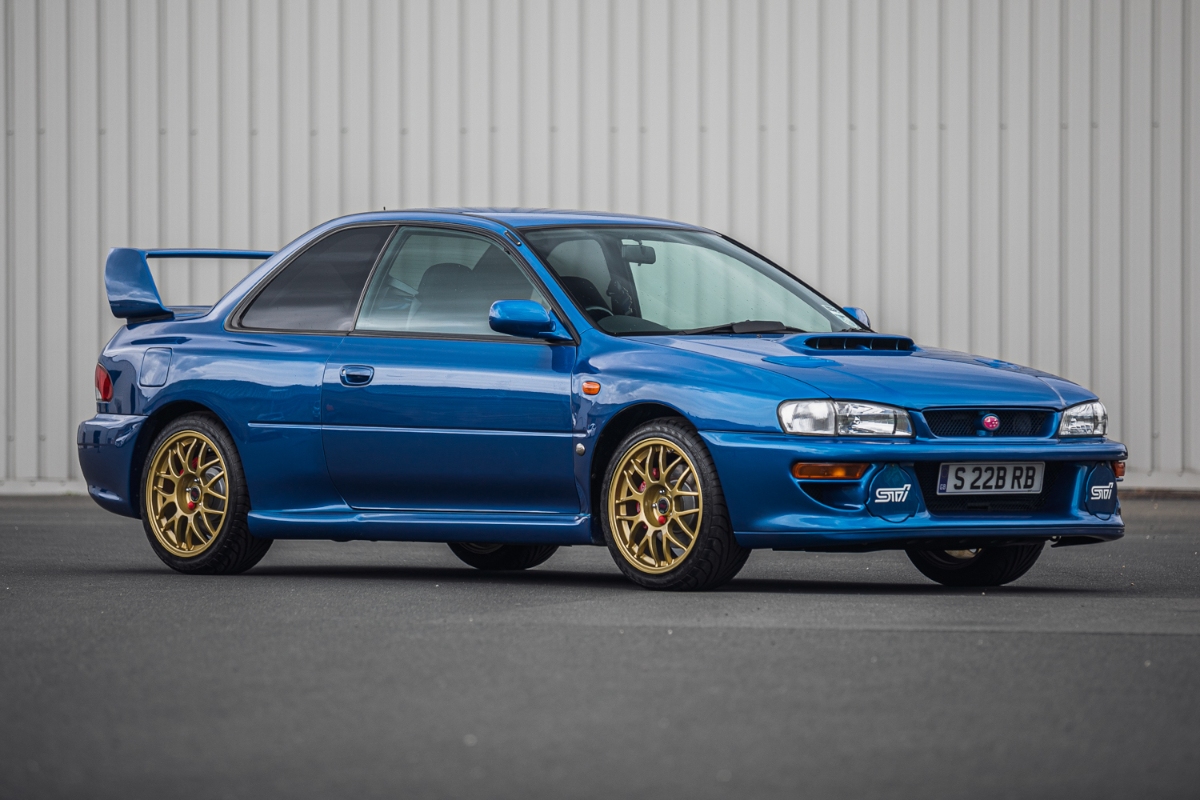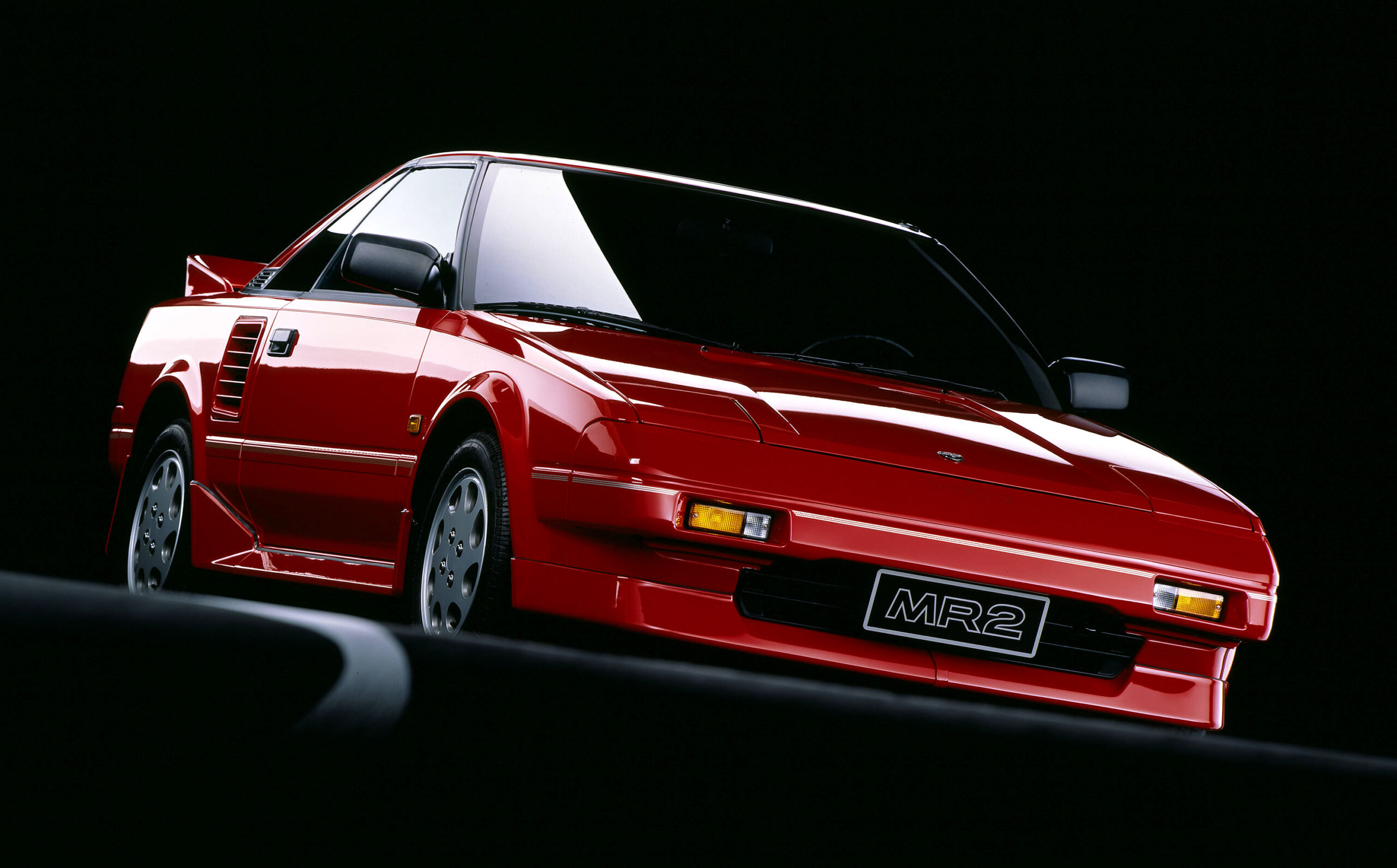Mazda’s first production rotary, the Cosmos 110S was a sporty two-seat coupe and Mazda didn’t build another one in significant quantities until 1978 when the RX7 appeared.
The compact and lightweight RX-7 came with an engine only slightly bigger than the one used by the Cosmo; 1146cc against 982cc and with just 77kW of power.
Selling in Australia for a whisker less than $15,000 the Mazda was pitched against Alfa Romeo’s 2000 GTV and undercut Nissan’s 280ZX by almost $5000.
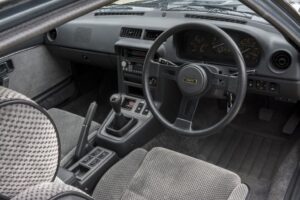
Standard equipment included air-conditioning and power windows, but an automatic transmission didn’t arrive until 1981 – Image Mazda
Mazda’s route to success globally was made easier by the demise of British models including the Triumph TR7 and MGB. Certainly, the RX-7 was fundamental to the growth of Japanese models in the North American sportscar market.
Although cars with the 12A rotary engine didn’t win a lot of drag races, they made amends with their delightfully responsive chassis and the RX-7 became a front runner in local Series Production races.
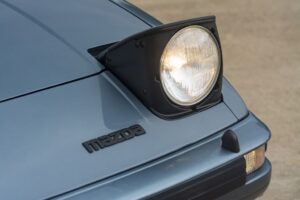
In 1984 the Series 3 made headlamp washers redundant – Image Mazda
Standard equipment included air-conditioning and power windows, but an automatic transmission didn’t arrive until 1981.
It accompanied the RX-7 Series 2 which arrived with rear disc brakes in place of the S1’s drums and an extra 7kW of power beneath the bonnet. Alloy wheels in a distinctive four-spoke design were fitted but they were a modest 13-inches in diameter with skinny 185-section tyres.
For 1984 the RX-7 Super Deluxe was renamed ‘Limited’ and sold in Series 3 form at $23,000, followed by a leap to more than $27,000. Improvements included a larger 63-litre fuel tank, bigger wheels with wider tyres, a sunroof, cruise control and redundant headlamp washers. Automatic transmission was standard but most buyers preferred the manual.
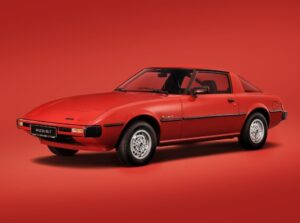
Mazda’s route to success globally was made easier by the demise of British models including the Triumph TR7 and MGB – Image Mazda
The seats in later RX-7s were significantly better than in S1 cars which were criticised for their lack of support. Headroom in any RX-7 model is tight if you’re tall, and leg room with the front seats fully forward is only 190mm. The area behind the seats is best regarded as a luggage platform.
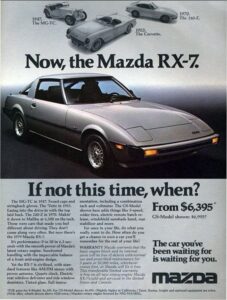
Imagine a time when your new sports car cost from $6,395 – Image Mazda
RX-7s run happily on 91 RON fuel or 95 Premium but not E10. Be wary of cars that blow smoke due to failed apex seals or that have been turbocharged without the requisite upgrades in other areas.
Good examples of early RX-7s can cost as much as $40,000, with some vendors trying for a lot more. This distinctive Japanese sports car doesn’t yet rate as highly collectable but still offers very enjoyable motoring, while the pros and cons of the rotary engine always makes for good pub banter.
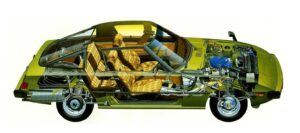
Headroom in any RX-7 model is tight if you’re tall – Image Mazda
Things To Watch Out For, When Buying a Used Mazda RX-7
- Poor repairs from the days when these cars weren’t very valuable
- Wet boot carpet due to leaking rear window seal
- Exhaust smoke when decelerating
- Clutch shudder and differential noise
- More than 40mm of free play at the top of the steering indicating a worn steering box
- Damaged alloy wheels (on later cars)
- Pop-up headlights slow to appear once the switch is activated
- Water leaks around the sunroof in Series 3s
Valuation Timeline: Mazda RX-7 (1985-2024)
-
1995$10,000
-
2005$16,700+67%
-
2010$15,000-10.18%
-
2014$16,500+10%
-
2019$27,500+66.67%
-
2024$54,500+98.18%S3 Limited

